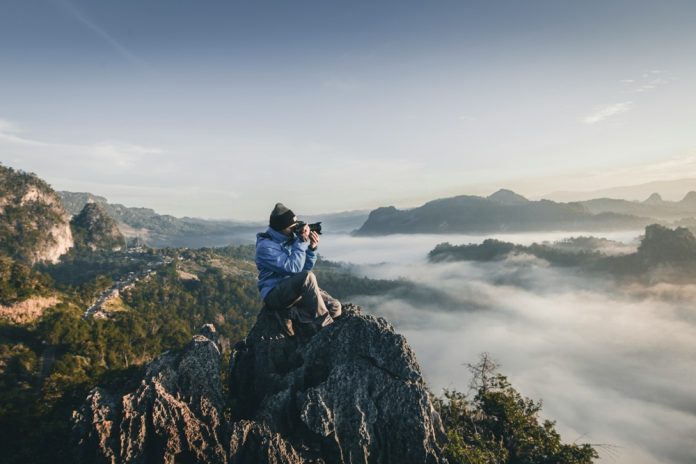Let’s face it—travel is already expensive. Add photography gear into the mix, and things can get overwhelming fast. But here’s the good news: you don’t need to spend thousands of dollars to take incredible travel photos. In fact, with the right budget gear and a little know-how, you can shoot professional-looking images without blowing your savings.
Many new photographers believe they need the latest mirrorless camera or a bag full of lenses to capture stunning travel shots. That’s simply not true. Great photos come from good light, smart composition, and knowing how to use what you’ve got. The gear is just a tool—and you don’t need the most expensive tool to build something amazing.
Whether you’re backpacking across Europe, road-tripping through national parks, or flying out for a weekend city escape, this guide to travel photography on a budget will help you pack the right gear, protect it, and make the most of every shot. Let’s dive in.
Table of Contents
- The Smart Approach to Travel Photography Gear
- Best Budget Cameras for Travel Photography
- Affordable Lenses That Pack a Punch
- Must-Have Accessories That Won’t Empty Your Wallet
- Smartphone Photography: Underrated and Powerful
- Used Gear: A Budget Photographer’s Best Friend
- Protecting and Storing Your Gear on a Budget
- Final Thoughts: Invest in Skills, Not Just Gear
- FAQ: Travel Photography on a Budget
The Smart Approach to Travel Photography Gear

Photo by Mike Baker on Unsplash (license)
When you’re trying to master photography on a budget, your focus should be on value and versatility. You want lightweight gear that covers a wide range of situations—portraits, landscapes, street scenes—without needing five different lenses or an oversized backpack.
Compact mirrorless systems or lightweight DSLRs are great choices. They’re portable, powerful, and compatible with affordable lenses. Look for gear that strikes a balance between image quality, weight, and price. Don’t underestimate kit lenses, either—they’re better than most people think and are perfectly capable for most travel scenarios.
Remember, the goal is to spend smart. It’s not about having the cheapest gear—it’s about getting the most value for your money. A solid, budget-friendly setup that’s easy to carry will serve you far better than a bulky pro rig that stays back at the hotel because it’s too heavy.
Best Budget Cameras for Travel Photography

When choosing a camera for travel photography on a budget, look for models that are compact, reliable, and perform well in a variety of lighting conditions. Mirrorless options are especially attractive because they’re small and easy to carry around all day.
Top picks include the Canon EOS R50 (shown above), Nikon Z30, Sony ZV-E10, and Fujifilm X-T30 II. These cameras all offer excellent image quality, interchangeable lenses, and built-in Wi-Fi for quick sharing. Many come bundled with a kit lens—perfect for beginners looking to start without extra cost.
If you’re sticking closer to $500, a refurbished or used model is a great option. MPB is one of the best platforms for buying quality used gear. They offer fair pricing, strict quality checks, and a 6-month warranty, making it easier to shop with confidence. I’ve personally bought, sold, and traded gear with MPB for years, and couldn’t be happier with the gear I’ve gotten.
Don’t forget to consider battery life, size, and ease of use, too. A camera that feels good in your hand and fits in your bag will get used more often than something fancy but bulky.
Affordable Lenses That Pack a Punch

Lenses are where the magic happens—but you don’t need a huge collection to get started. In fact, one or two affordable lenses can cover most travel situations. If your camera came with a kit lens (like an 18–55mm as shown above or a 16–50mm), that’s a great place to begin.
For more reach, an 18–135mm or 55–210mm zoom lens gives you flexibility to shoot everything from landscapes to distant subjects. Want something better in low light or for portraits? The 50mm f/1.8 lens—often called the “nifty fifty”—is sharp, compact, and very affordable.
Zoom lenses are more versatile for travel, but primes (like the 35mm or 50mm) often offer better image quality for the price. If you’re just starting out, stick with one lens and really learn its strengths. Fewer choices often lead to more creative shots.
Sites like MPB also offer fantastic deals on used lenses, letting you stretch your budget even further. In fact, if you opt for an older DSLR and matching lens, you could easily get equipped for travel photography for less than $500.
Must-Have Accessories That Won’t Empty Your Wallet
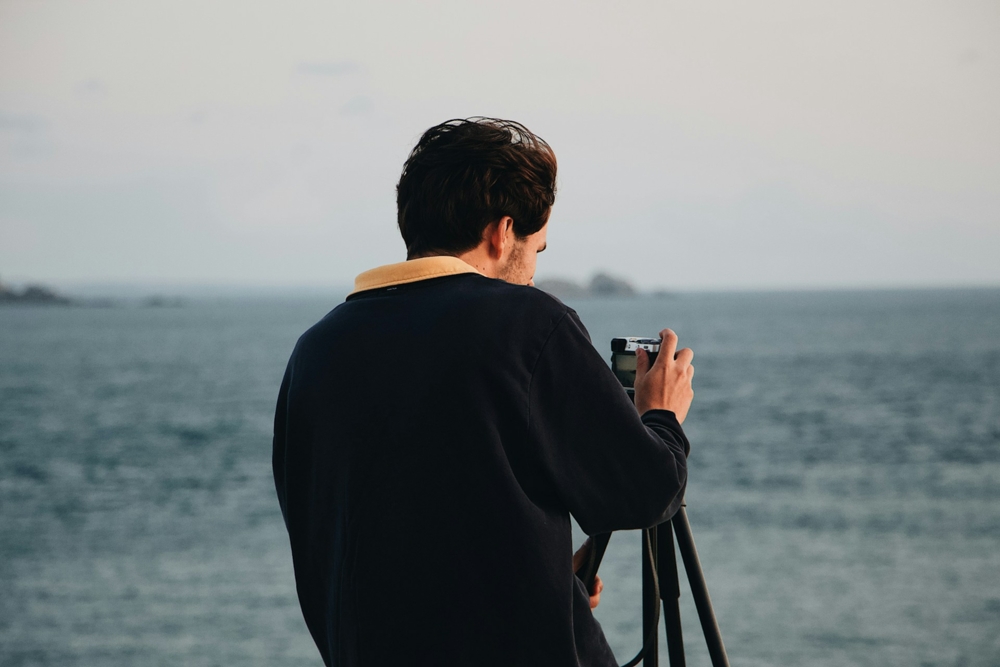
Photo by Maël BALLAND on Unsplash (license)
You don’t need a suitcase full of accessories to shoot great photos on the go. A few well-chosen items can make a big difference—without spending a lot. Start with a compact tripod like the Manfrotto Pixi or JOBY GorillaPod. These are lightweight and perfect for travel shots or long exposures.
Buy a couple of reliable SD cards (32GB–64GB is ideal) with decent write speeds so you’re not stuck swapping or waiting. Always carry a few microfiber lens cloths and a basic rain cover or zip-top bag for protection in bad weather.
For comfort and safety, an adjustable camera strap or sling strap will keep your gear secure and accessible. And instead of a bulky camera backpack, consider a small padded insert that fits inside your regular daypack.
Each of these accessories supports photography on a budget while helping you get better results without overcomplicating your setup.
Smartphone Photography: Underrated and Powerful
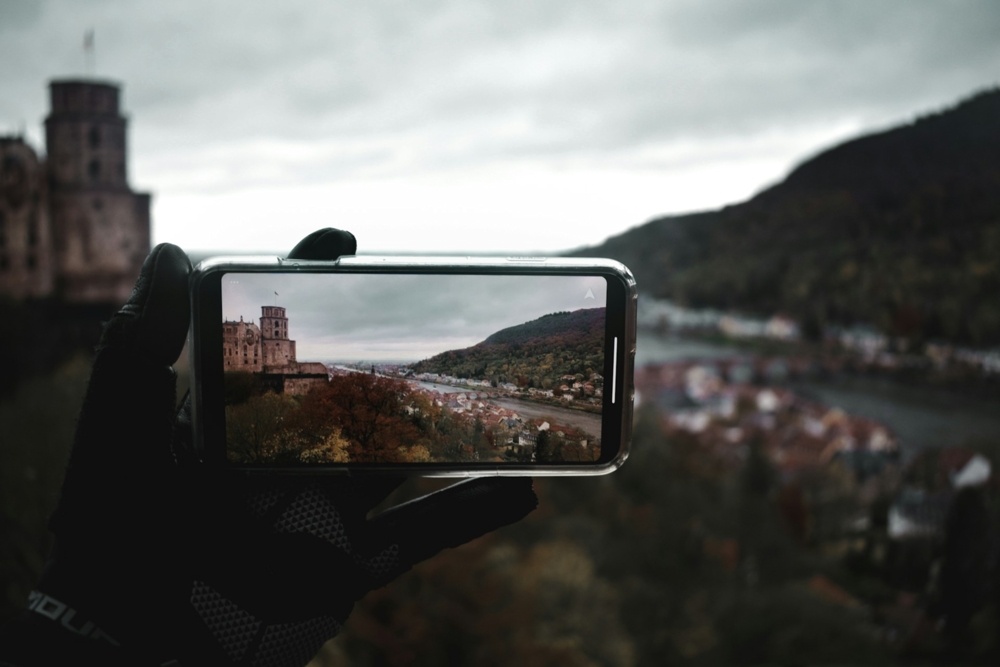
Photo by Obaid Ur Rehman on Unsplash (license)
If you’re not ready to invest in a dedicated camera, don’t worry—your smartphone is already a powerful photography tool. Most modern phones have excellent cameras that are more than capable of capturing travel memories in stunning detail.
Use gridlines to compose your shots, and learn to work with available light. Apps like Snapseed and Lightroom Mobile offer powerful editing tools right on your phone. You can even shoot in RAW for more editing flexibility.
Clip-on lenses and mini tripods are budget-friendly upgrades that expand what your phone can do. Whether it’s a wide-angle for landscapes or a small stabilizer for smoother video, the right add-ons can help you get professional-looking results.
For true photography on a budget, smartphones are a smart and accessible way to start your travel photo journey.
Used Gear: A Budget Photographer’s Best Friend

Used gear is one of the best-kept secrets for affordable travel photography. You can get top-tier performance at a fraction of the price—if you know where to look. Again, MPB is a standout option for buying used cameras and lenses. They grade their equipment honestly, offer a 6-month warranty, and have an easy return policy.
Whether you’re buying a first camera or upgrading a lens, shopping used can double the value of your budget. Just be sure to check shutter count, body condition, and whether the lens is free of dust or fungus.
Refurbished gear from manufacturers like Canon, Nikon, and Sony is also a smart route. These items have been restored to like-new condition and are often backed by full warranties.
Photography on a budget doesn’t mean settling—it means shopping smart.
Keep Reading: Travel Photography Tips for Beginners: How to Make the Most of Your Photos
Protecting and Storing Your Gear on a Budget
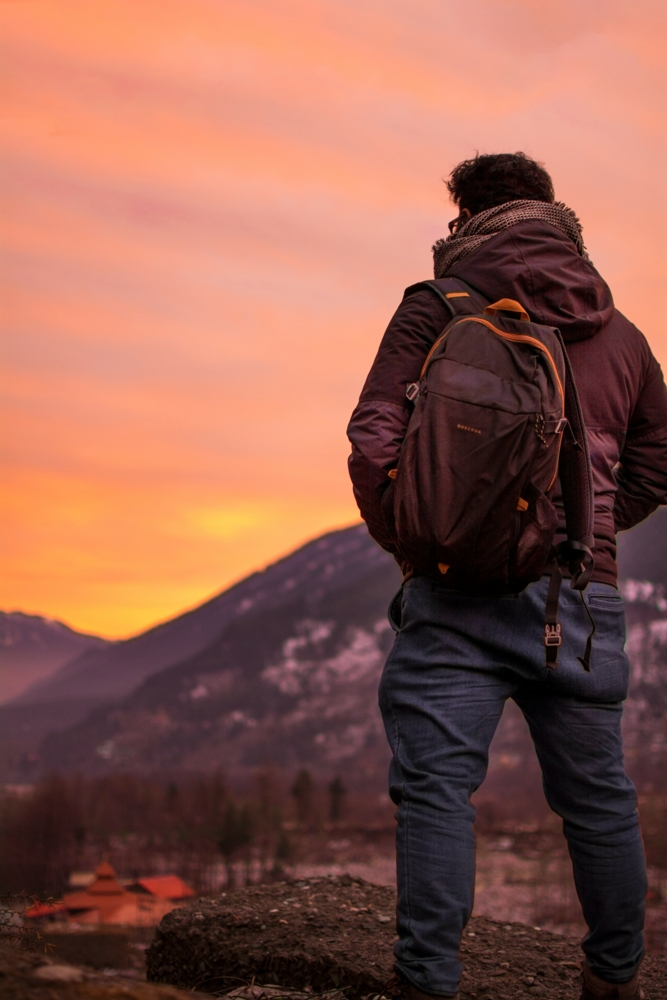
Photo by Rohit Kumar on Unsplash (license)
Keeping your gear safe is just as important as owning it. A sudden downpour, a dropped lens, or a lost SD card can ruin a trip. But you don’t need fancy cases to stay protected—just a little preparation.
Use microfiber pouches or old lens bags to cushion items in your backpack. Zip-lock bags make great DIY rain covers. For serious weather, lightweight dry bags can keep your gear safe without adding bulk.
Memory card holders are cheap and prevent data loss from cracked or lost cards. If you travel with a laptop, back up your photos daily. No laptop? Upload to cloud storage like Google Photos whenever you get Wi-Fi.
Good storage habits help keep photography on a budget stress-free and reliable.
Final Thoughts: Invest in Skills, Not Just Gear
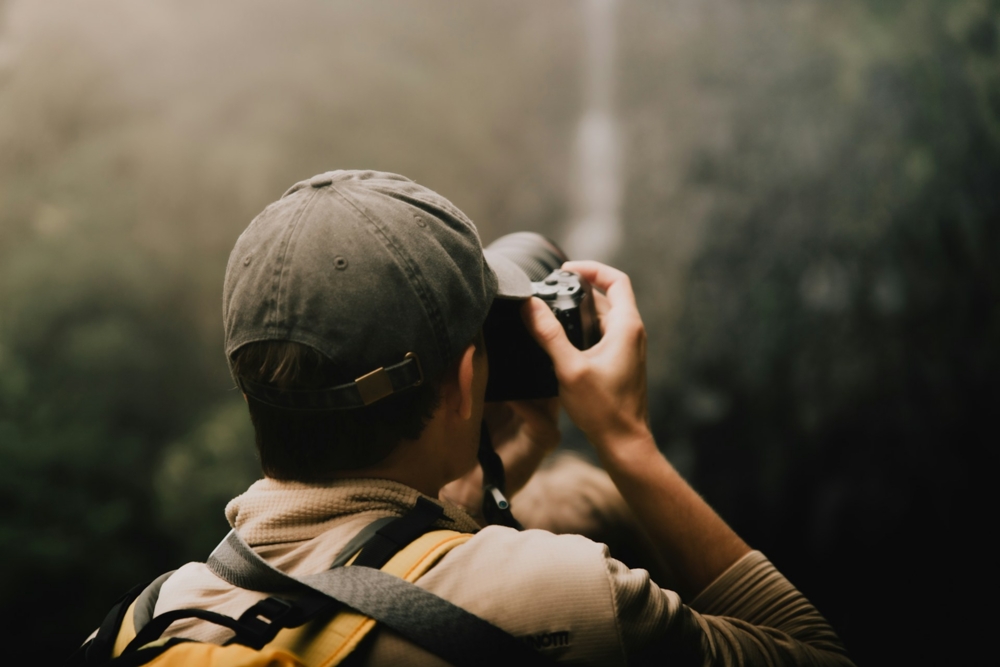
Photo by Daniel J. Schwarz on Unsplash (license)
The best part of photography on a budget is that it forces you to learn and grow. Without relying on expensive gear, you develop your eye, your timing, and your understanding of light. Those skills will take you much further than the latest lens ever could.
Don’t worry about what other photographers are using. Focus on what you can do with what you have. Travel photography should be about storytelling and connection—not just pixels and specs.
When you’re ready to upgrade, you’ll know exactly what you need and why. Until then, shoot often, stay curious, and enjoy the journey.
FAQ: Travel Photography on a Budget
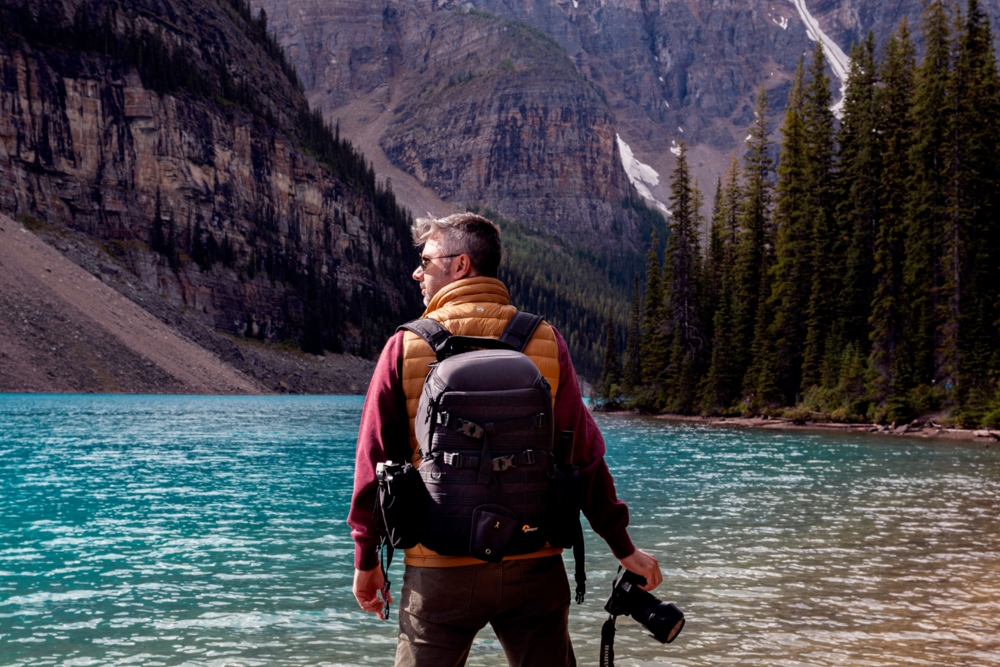
Photo by Andre Furtado on Unsplash (license)
What is the best budget camera for travel photography?
The Canon EOS R50, Nikon Z30, and Sony ZV-E10 are excellent beginner options. All offer great quality and compact size at a fair price.
Where can I buy quality used camera gear?
MPB is a trusted source for used gear with honest grading and a 6-month warranty.
Do I need more than one lens when traveling?
Not necessarily. A kit lens or a zoom like an 18–135mm can cover a wide range of situations. Start with one and build from there.
Is a smartphone good enough for travel photography?
Yes! Many smartphones have excellent cameras. Use manual controls and editing apps to get even better results.
How can I protect my gear without spending a lot?
Use padded inserts in your daypack, zip-top bags for weather protection, and back up your images to cloud storage or a thumb drive.
Heads up: Clicking on our affiliate links and exploring our sponsored content helps us at no extra cost to you, and we only recommend gear we’re absolutely crazy about!
Learn More:
- Top 6 Travel Photography Mistakes and How to Avoid Them
- How to Capture Authentic Moments While Traveling
Hero Photo by Alif Ngoylung on Unsplash (license)

